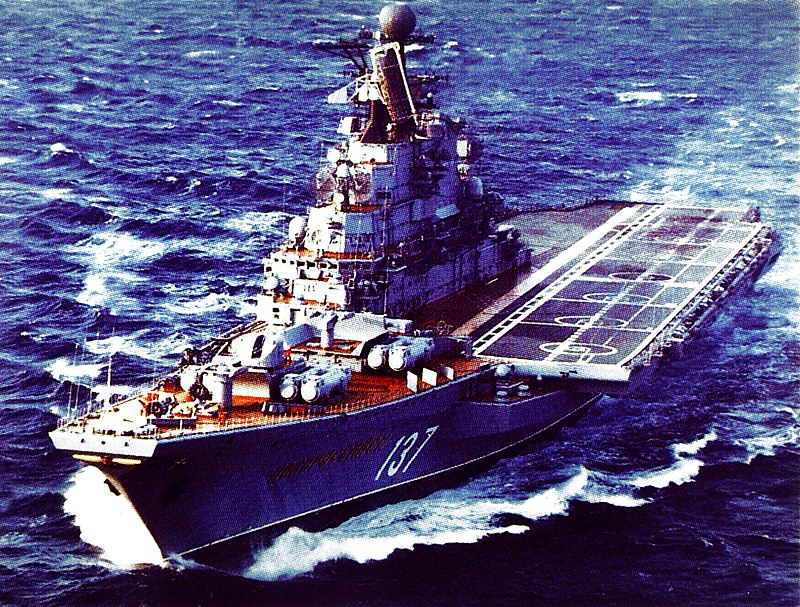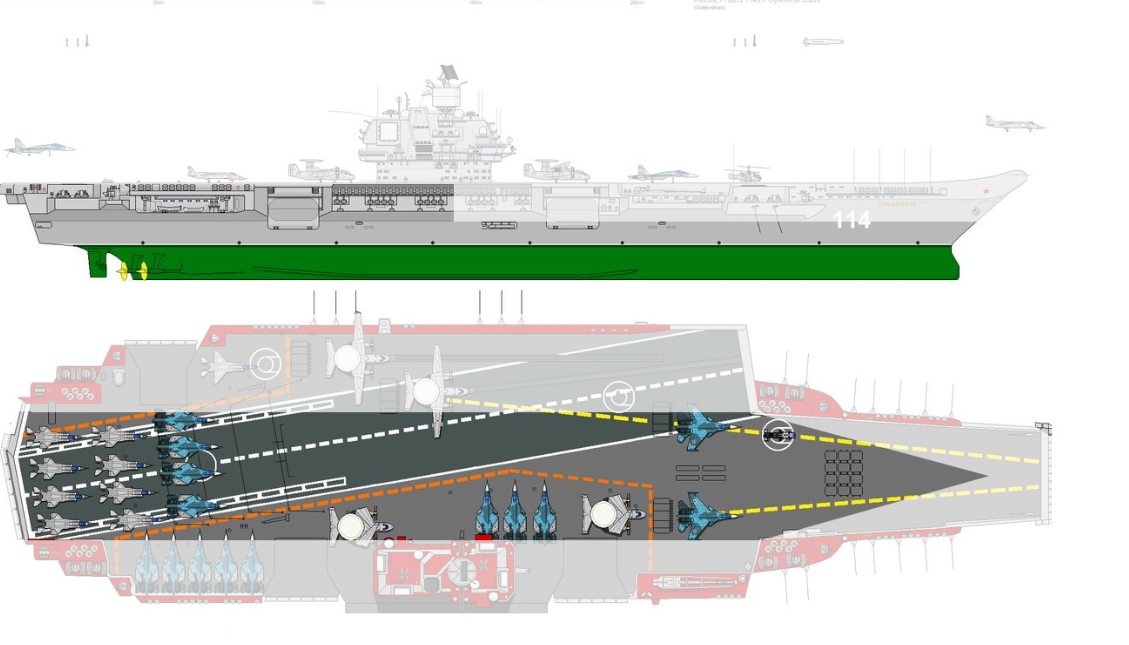The Long (Soviet) Road to a Fully Fledged Aircraft Carrier

Not many countries in the world could build a 100,000-ton aircraft carrier. The Americans have managed this feat with the Gerald R. Ford-class aircraft carrier, but that happened on the back of 95 years of carrier building and operation. And it was far from painless.
The way to proceed is usually to start with a smaller concept and gradually put into work the experience gained with the construction and operations of those concepts, then upscale the next project.
The Moskva Class Helicopter Carrier

It is basically what the Soviets went through between 1967 and 1988. They started in 1967 with the Moskva class helicopter carrier. The Moskva was slightly smaller/lighter than a modern Mistral class ship, weighing in at 14,950 tons.
The Kiev Class Heavy Aviation Cruiser

Eight years later, in 1975, the Soviets built their first “heavy aviation cruiser”: The Kiev Class. At 42,000 tons, it was lighter than its American contemporary, the USS John F. Kennedy which came in at 60,728 tons, but it gave the Soviets a platform to experiment with carrier-based operations: The Kiev could carry up to 18 helicopters and 12 VTOL Yak-38.
The Admiral Kuznetsov

In 1985, things got serious for the Soviets with the launch of their brand new modern heavy aircraft-carrying missile cruiser Admiral Kuznetsov. At 43,000 tons, it was still a lightweight compared to its American counterparts, but it was still 10,000 tons heavier than its French counterparts and double the weight of its British equivalents. Still a hybrid design and still predominantly a missile cruiser, it nevertheless had the potential to operate as a light aircraft carrier. The Kuznetsov’s current airwing is 36 planes and 24 helicopters.
The Ulyanovsk
In 1988, the Soviets were finally ready to try their hands at constructing and operating a “real” aircraft carrier and the keel of the 65,800-ton Ulyanovsk was laid down. With 50 aircraft, 18 helicopters and a classic aircraft carrier layout, the Ulyanovsk was to give the Soviet Union real potential at projecting force in faraway theaters. Fate decided otherwise and as the Soviet Union crumbled, work on the Ulyanovsk – suddenly finding itself in a newly independent Ukraine – ceased in 1991. It was subsequently scrapped.
-RBM










